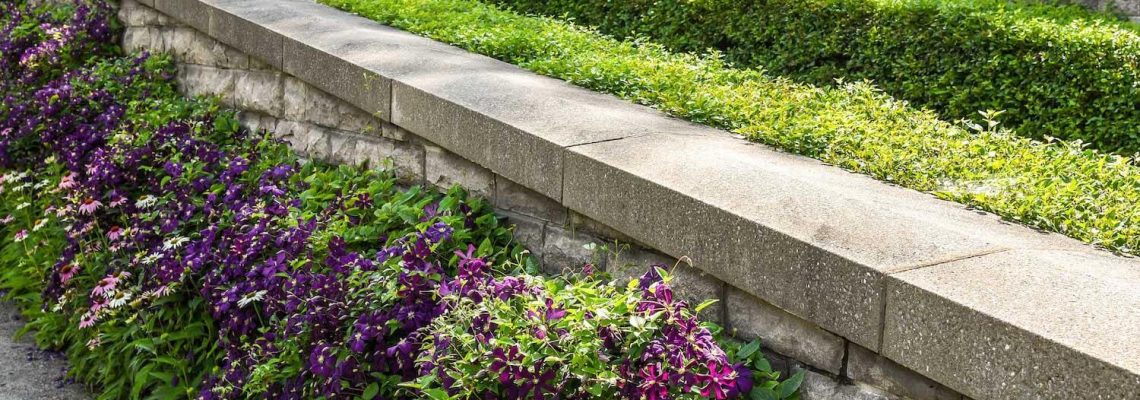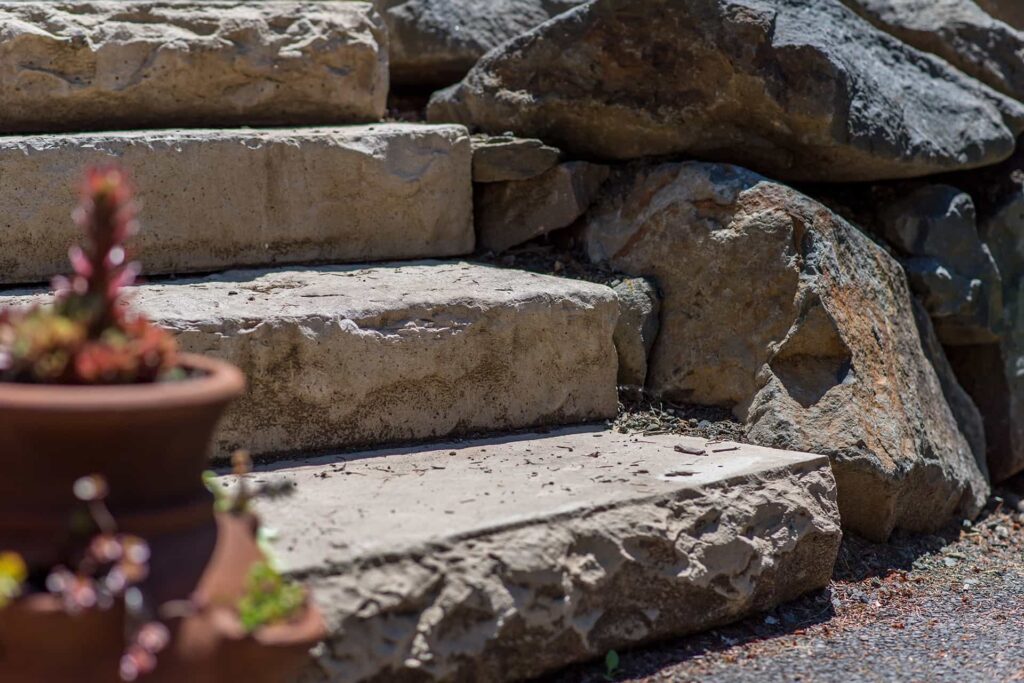Retaining walls have long been recognized for their practical function in holding back soil and preventing erosion on sloped landscapes. However, these essential structures can also be transformed into stunning design elements that elevate the aesthetics of your outdoor space. In this comprehensive guide, we will explore the creative possibilities of using retaining walls to add beauty, functionality, and character to your landscape.
The Versatility of Retaining Walls
Retaining walls are typically built to provide structural support and prevent soil movement on steep slopes. They are commonly used in terraced gardens, hillside properties, and landscapes with varying elevations. While their primary purpose is functional, modern landscaping design has embraced the versatility of retaining walls to create visually captivating outdoor spaces.
1. Multi-Level Terraces
One of the most striking ways to use retaining walls as design elements is by creating multi-level terraces. By incorporating multiple tiers of retaining walls, you can transform a steep and unusable slope into a series of flat, usable terraces. Each level can be dedicated to a different purpose, such as a patio, garden bed, or seating area, providing both functionality and visual appeal.
Terraced retaining walls not only add dimension to your landscape but also create a sense of depth and intimacy. Planting flowers, shrubs, and trees on each terrace enhances the lushness of your garden and adds a vibrant burst of color to your outdoor space.
2. Curved Design and Serpentine Walls
Retaining walls need not be rigid and straight; they can take on organic and flowing shapes that blend harmoniously with the natural contours of your landscape. Curved and serpentine retaining walls create a soft and graceful appearance, enhancing the visual flow of your garden.
These organic shapes can be used to frame pathways, encircle garden beds, or define the boundaries of outdoor spaces. The smooth curves of the retaining walls add a touch of elegance and gentle movement to your landscape, inviting exploration and discovery.
3. Cascading Waterfalls Design
Retaining walls can be ingeniously designed to incorporate cascading water features, adding an element of tranquility and soothing sounds to your outdoor oasis. By integrating a series of small waterfalls into the retaining wall structure, you can create a mesmerizing and visually captivating focal point.
The cascading waterfalls not only serve as an eye-catching design element but also add a cooling effect during hot summer days. Pairing the water feature with lush vegetation and decorative stones further enhances its beauty and creates a natural and serene ambiance.
4. Living Walls and Greenery
Retaining walls provide an ideal vertical canvas for creating living walls, also known as green walls or vertical gardens. By attaching planters or trellises to the face of the retaining wall, you can cultivate a diverse array of plants, herbs, and even small trees.
Living walls not only add a burst of greenery to your landscape but also improve air quality and promote biodiversity. The vibrant colors and textures of the plants create a living work of art, transforming your retaining wall into a living and breathing design feature.
5. Artistic and Mosaic Walls
For a touch of creativity and personal expression, consider using retaining walls as a canvas for artistic murals or mosaic designs. Talented artists or skilled DIY enthusiasts can paint intricate patterns, landscape scenes, or abstract artwork on the retaining wall surface.
Mosaic tiles can also be used to create intricate and colorful designs that add a sense of whimsy and charm to your landscape. These artistic features not only showcase your personality but also transform the retaining wall into a unique and captivating art installation.
6. Outdoor Seating and Wall Benches
Retaining walls can be cleverly designed to incorporate built-in seating or benches, providing functional seating areas within your landscape. By extending the top surface of the retaining wall or creating alcoves, you can fashion comfortable seating for relaxation, reading, or enjoying the view.
Adding cushions or outdoor pillows to the built-in seating enhances the comfort and style, making it a cozy nook to gather with friends and family. The integration of seating into the retaining walls adds both practicality and charm to your outdoor space.
Choosing the Wall Right Materials
The choice of materials for your retaining wall plays a crucial role in its aesthetic appeal and compatibility with your landscape design. Retaining walls can be constructed from various materials, each offering a unique look and feel:
1. Natural Stone Wall
Natural stone retaining walls exude a timeless and rustic charm, creating a seamless blend with the natural surroundings. Materials such as limestone, sandstone, and granite are commonly used for natural stone retaining walls.
2. Concrete Blocks
Concrete blocks offer versatility and durability, allowing for various design possibilities. They can be textured or stamped to resemble natural stone, brick, or other materials.
3. Wood
Wood retaining walls add warmth and a natural touch to your landscape. Treated wood, such as pressure-treated pine or cedar, is commonly used for wood retaining walls.
4. Brick Wall
Brick retaining walls offer a classic and elegant appearance, providing a sense of timeless sophistication to your landscape.
Retaining Wall Seating Walls
Retaining walls can serve a dual purpose by functioning as seating walls as well. By extending the width of the retaining wall and adding a smooth and comfortable surface, you create ample seating for guests to relax and enjoy the beauty of your landscape.
Seating walls are an excellent addition to outdoor entertaining areas, providing extra seating during gatherings or parties. Paired with plush cushions or outdoor pillows, these seating walls become comfortable and stylish spaces to host your guests.
Working with Landscaping Professionals
While there are many creative possibilities for using retaining walls as design elements, the execution of these ideas requires careful planning and expertise. Working with professional landscapers and hardscape designers ensures that your vision for the retaining walls is brought to life with precision and craftsmanship.
Professional designers can help you choose the right materials, styles, and lighting options to achieve your desired aesthetic. They will also take into consideration factors such as drainage, structural integrity, and local building codes to ensure the safety and longevity of the retaining walls.
Conclusion
Retaining walls are more than just functional structures; they are the canvas upon which you can create stunning design elements that transform your landscape into a captivating oasis. From multi-level terraces and cascading waterfalls to living walls and artistic murals, the possibilities of using retaining walls as design features are limited only by your imagination.
By choosing the right materials, shapes, and styles, you can seamlessly integrate retaining walls into your landscape, adding beauty, functionality, and character to your outdoor space. With these creative ideas in mind, embark on your journey to turn your retaining walls from mere supports into mesmerizing design elements that enchant and delight all who step into your outdoor sanctuary. So, let your imagination flow, and let your retaining walls become the centerpiece of an awe-inspiring and unforgettable landscape design.


